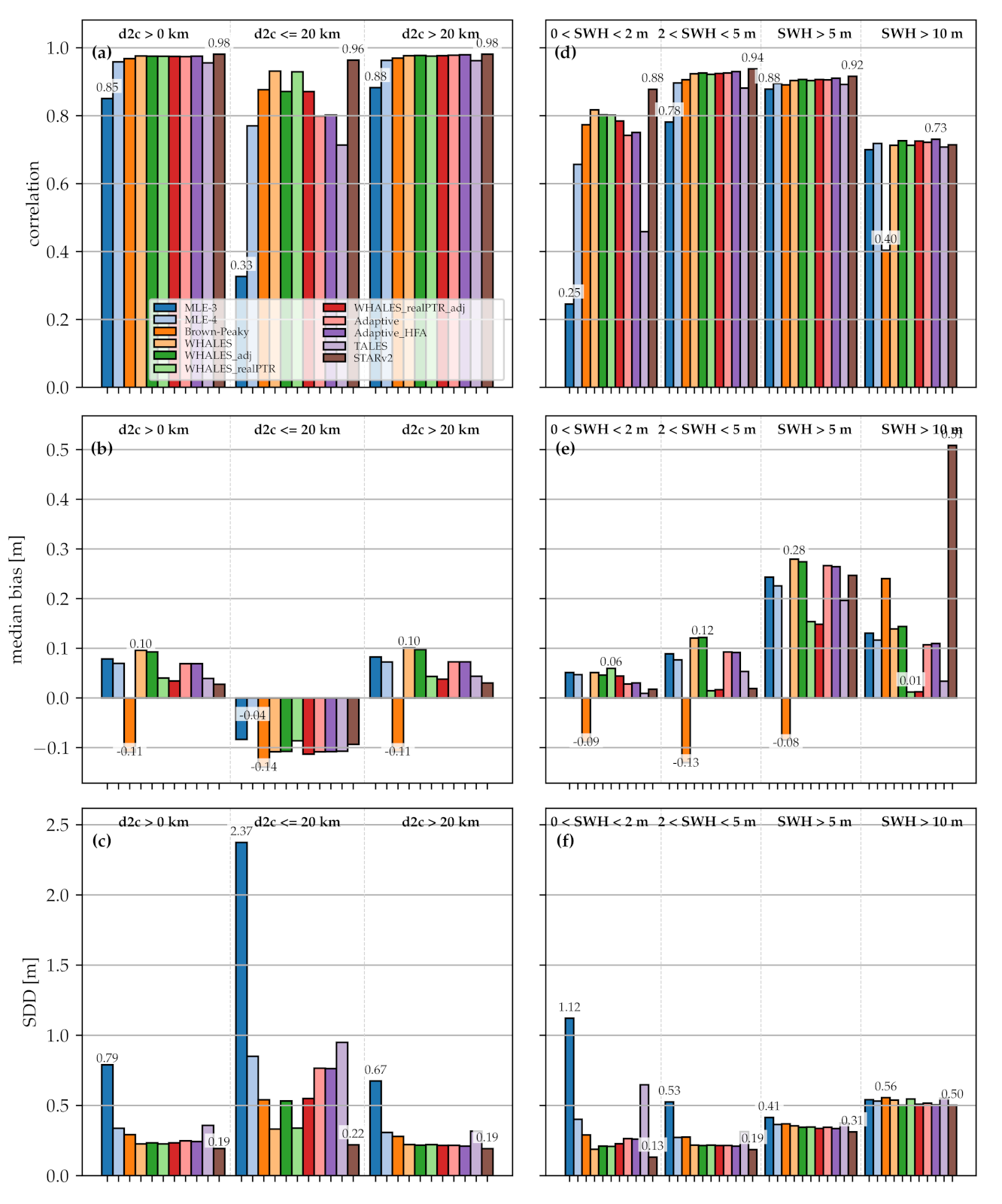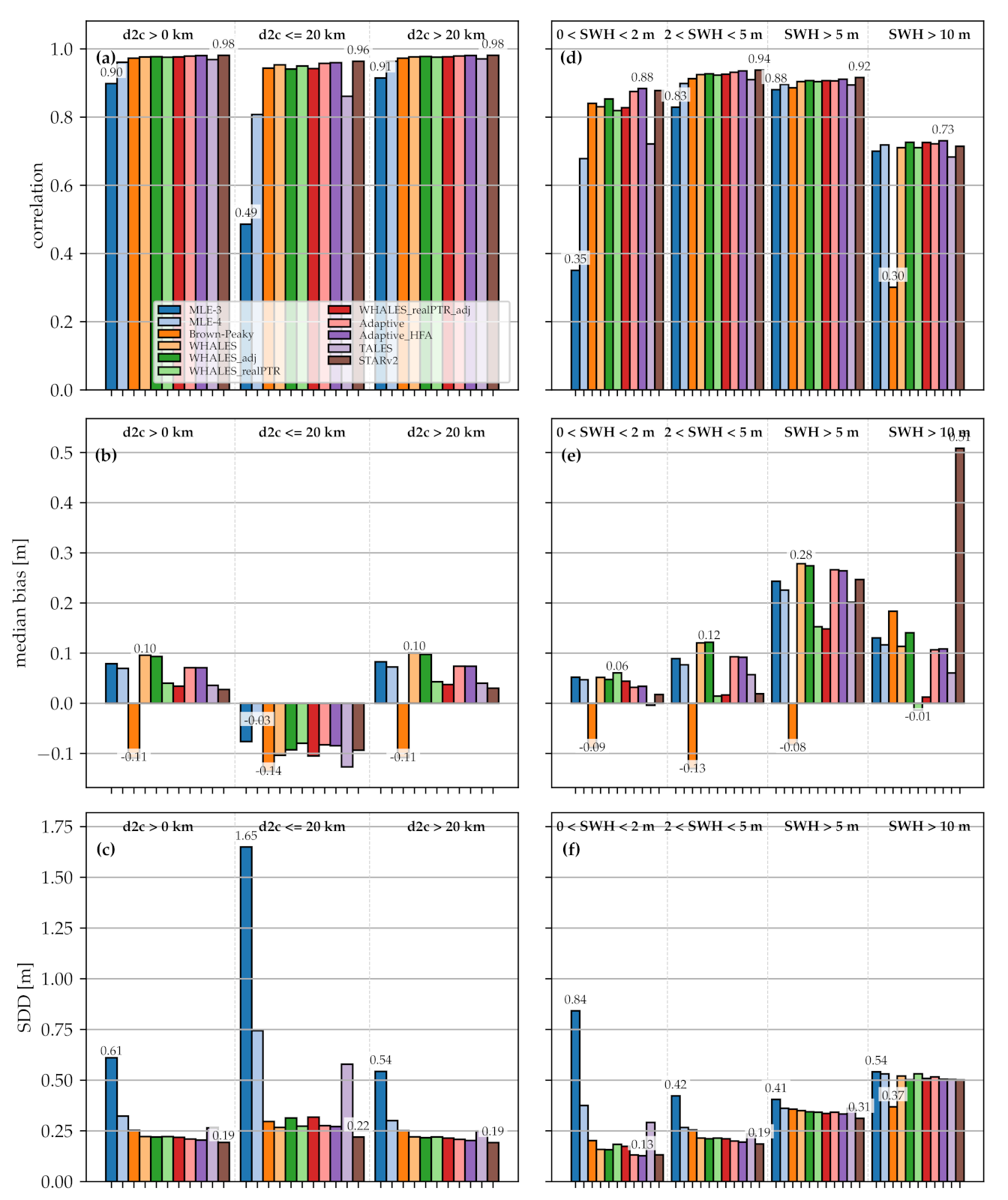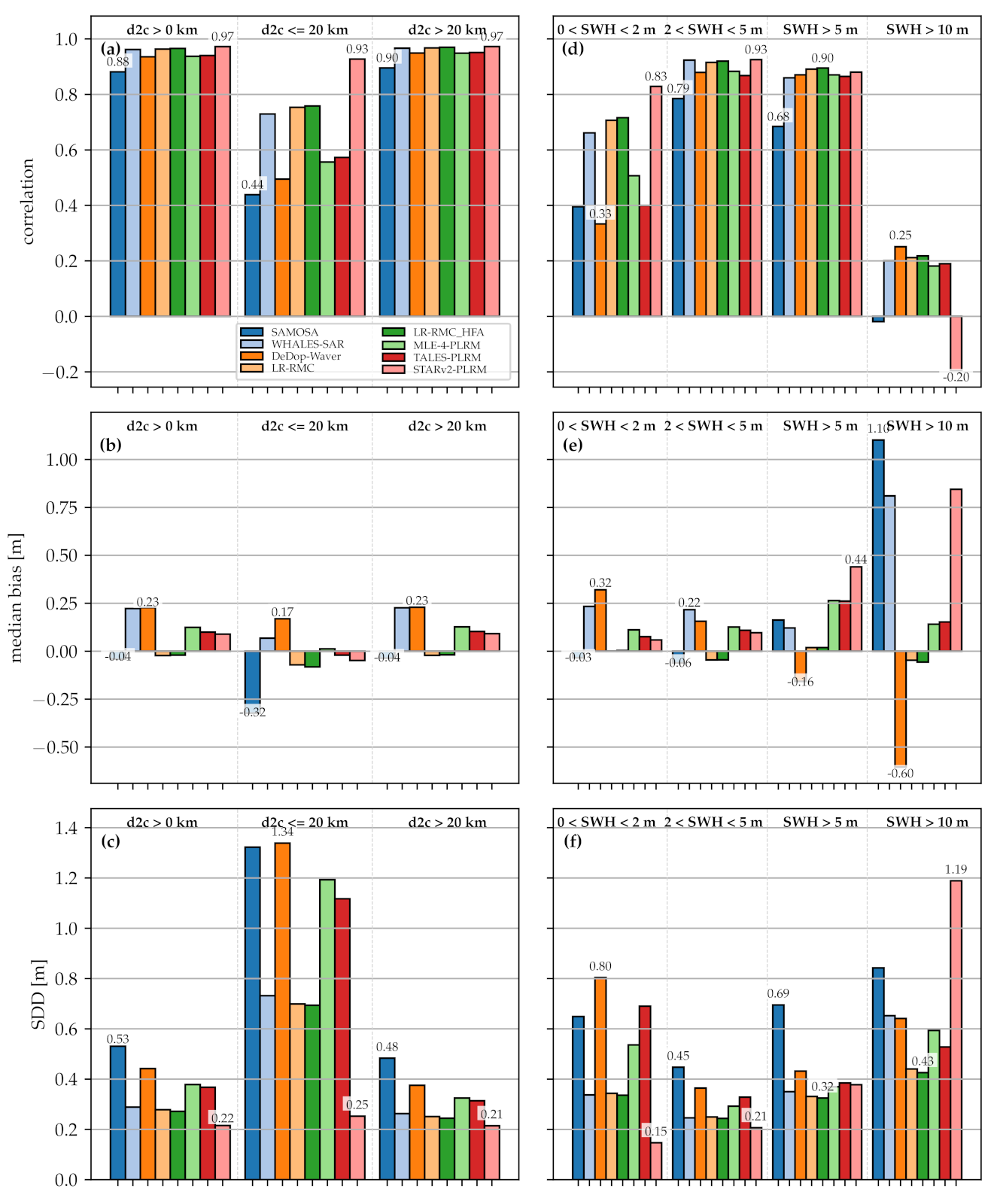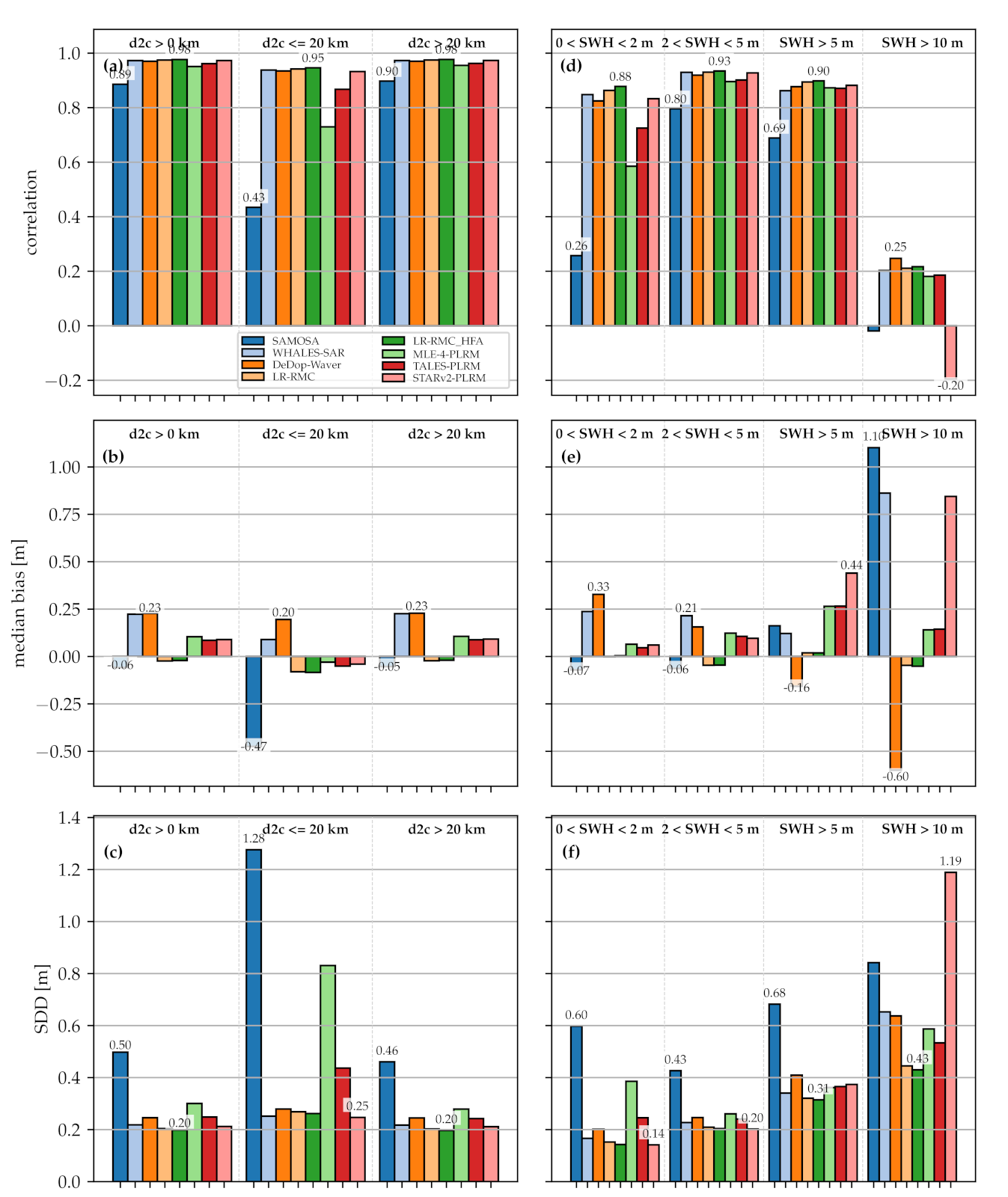Correction: Schlembach, F., et al. Round Robin Assessment of Radar Altimeter Low Resolution Mode and Delay-Doppler Retracking Algorithms for Significant Wave Height. Remote Sens. 2020, 12, 1254
1. Error in Figures
Corrections Section 4.4: Comparison against Wave Model




2. Text Correction
Corrections Section 4.6: Selection and Decision Process of ESA SeaState_cci Consortium
| Mode | LRM | DDA | |
|---|---|---|---|
| Rank | |||
| 1. | Adaptive | LR-RMC | |
| 2. | WHALES | WHALES-SAR/DeDop-Waver | |
Funding
Conflicts of Interest
Reference
- Schlembach, F.; Passaro, M.; Quartly, G.D.; Kurekin, A.; Nencioli, F.; Dodet, G.; Piollé, J.-F.; Ardhuin, F.; Bidlot, J.; Schwatke, C.; et al. Round Robin Assessment of Radar Altimeter Low Resolution Mode and Delay-Doppler Retracking Algorithms for Significant Wave Height. Remote Sens. 2020, 12, 1254. [Google Scholar] [CrossRef]
Publisher’s Note: MDPI stays neutral with regard to jurisdictional claims in published maps and institutional affiliations. |
© 2021 by the authors. Licensee MDPI, Basel, Switzerland. This article is an open access article distributed under the terms and conditions of the Creative Commons Attribution (CC BY) license (http://creativecommons.org/licenses/by/4.0/).
Share and Cite
Schlembach, F.; Passaro, M.; Quartly, G.D.; Kurekin, A.; Nencioli, F.; Dodet, G.; Piollé, J.-F.; Ardhuin, F.; Bidlot, J.; Schwatke, C.; et al. Correction: Schlembach, F., et al. Round Robin Assessment of Radar Altimeter Low Resolution Mode and Delay-Doppler Retracking Algorithms for Significant Wave Height. Remote Sens. 2020, 12, 1254. Remote Sens. 2021, 13, 1182. https://doi.org/10.3390/rs13061182
Schlembach F, Passaro M, Quartly GD, Kurekin A, Nencioli F, Dodet G, Piollé J-F, Ardhuin F, Bidlot J, Schwatke C, et al. Correction: Schlembach, F., et al. Round Robin Assessment of Radar Altimeter Low Resolution Mode and Delay-Doppler Retracking Algorithms for Significant Wave Height. Remote Sens. 2020, 12, 1254. Remote Sensing. 2021; 13(6):1182. https://doi.org/10.3390/rs13061182
Chicago/Turabian StyleSchlembach, Florian, Marcello Passaro, Graham D. Quartly, Andrey Kurekin, Francesco Nencioli, Guillaume Dodet, Jean-François Piollé, Fabrice Ardhuin, Jean Bidlot, Christian Schwatke, and et al. 2021. "Correction: Schlembach, F., et al. Round Robin Assessment of Radar Altimeter Low Resolution Mode and Delay-Doppler Retracking Algorithms for Significant Wave Height. Remote Sens. 2020, 12, 1254" Remote Sensing 13, no. 6: 1182. https://doi.org/10.3390/rs13061182
APA StyleSchlembach, F., Passaro, M., Quartly, G. D., Kurekin, A., Nencioli, F., Dodet, G., Piollé, J.-F., Ardhuin, F., Bidlot, J., Schwatke, C., Seitz, F., Cipollini, P., & Donlon, C. (2021). Correction: Schlembach, F., et al. Round Robin Assessment of Radar Altimeter Low Resolution Mode and Delay-Doppler Retracking Algorithms for Significant Wave Height. Remote Sens. 2020, 12, 1254. Remote Sensing, 13(6), 1182. https://doi.org/10.3390/rs13061182





